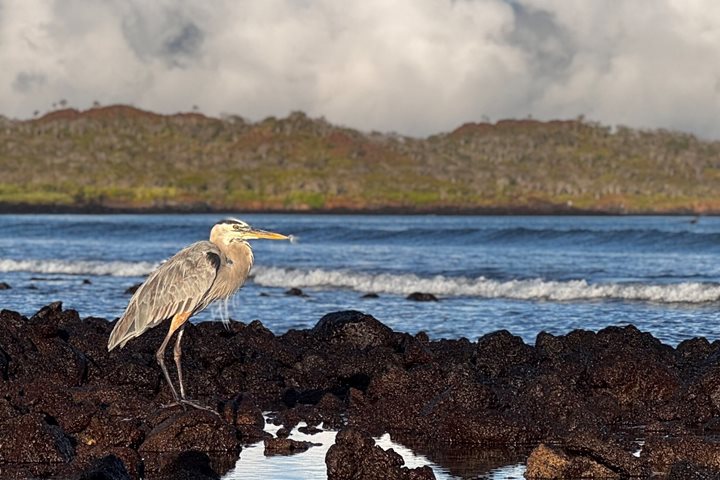Early morning is the best moment to enjoy nature walks, therefore we have our first outing just right after breakfast zodiacs left the National Geographic Endeavor with a team of expeditioners, eager to discover the island of North Seymour.
Our walk began with the many different sightings of Galapagos wildlife. North Seymour is a small island, being its size a big advantage for its inhabitants, no big predators, no fear. Swallow-tailed gulls and California sea lions along the sandy path, also blue footed boobies nesting, and land iguanas, the smallest of marine iguanas, yellow warblers, great and magnificent frigate birds, being the last ones still engaged in their nesting season.
Frigate birds have been busy this season, we met several sizes of baby chicks, and the best of it all were the males with their red well inflated pouch to attract females.
Land birds, this time were not that many, Galapagos is dry now, no fresh water and insects to eat, but surprisingly we found a Galapagos dove nesting between two cactus pads, this small bird must know where to find food for sure.
The trail is not precisely a long one, less than a mile, but we stopped so many times, it was necessary, to be able to observe and absorb.
We arrived just on time to go snorkeling, the first one of this week, the most important perhaps, because everybody will see and feel another face of Galapagos, the other half of this archipelago.
The conditions were just magnificent; everybody came with stories of what they saw, smiling and sharing pictures with one another, sharks, sea lions, colorful fishes, big schools.
Later on, before the day is over, we all did a walk, along the beach and the dry forest. The vegetation around this time of the year is so dry, that the red color of the rocks stands out so well and the sunlight brings into the landscape some surreal appearance. The sun is going down, pelicans together with sea lions and blue footed boobies feed in the water while the sky is painted in red.









